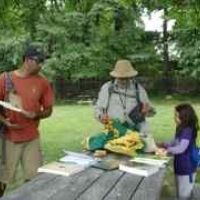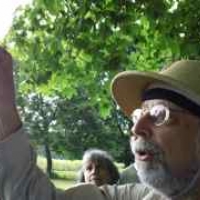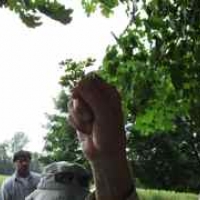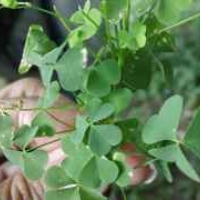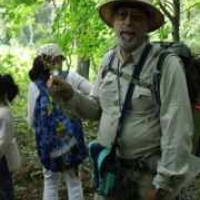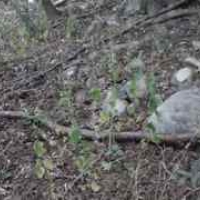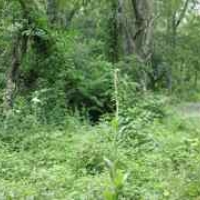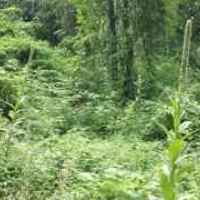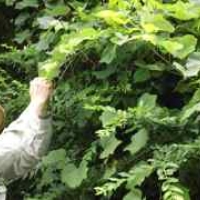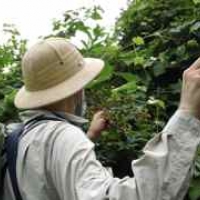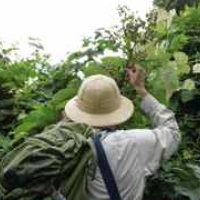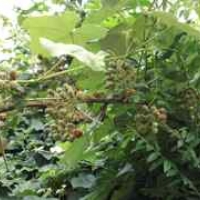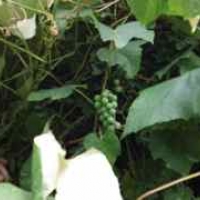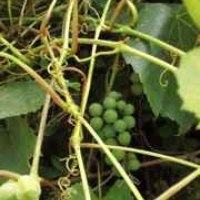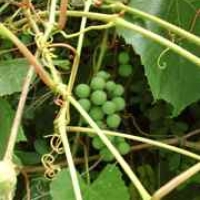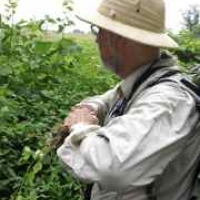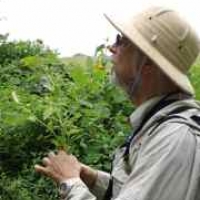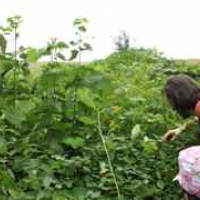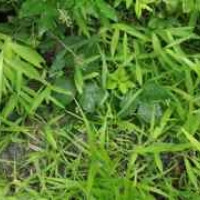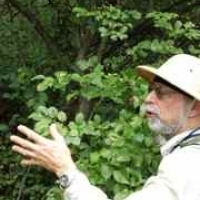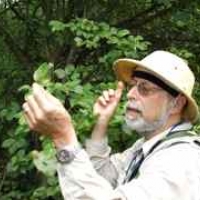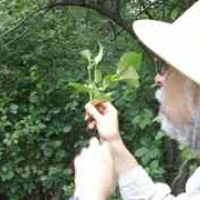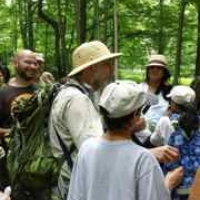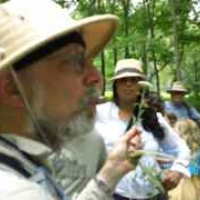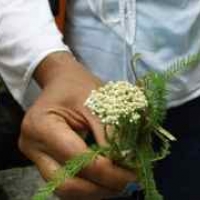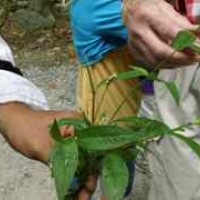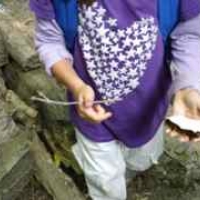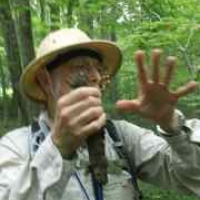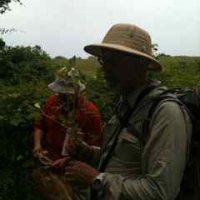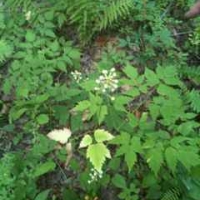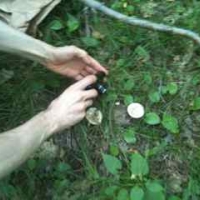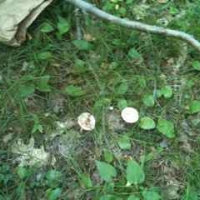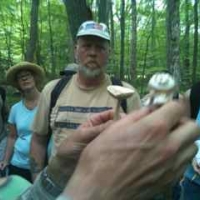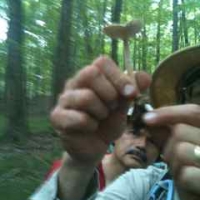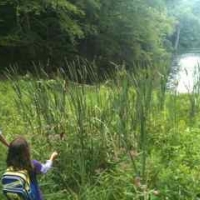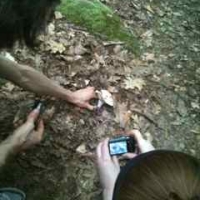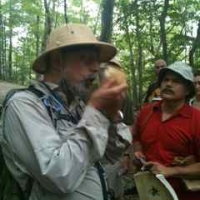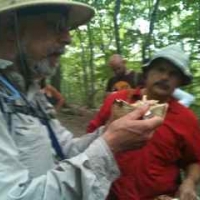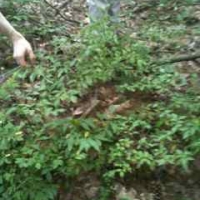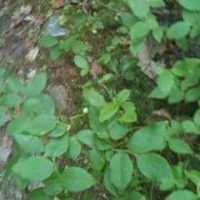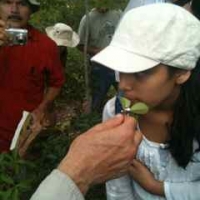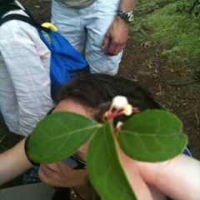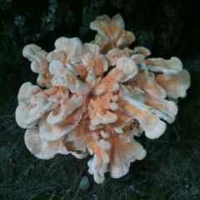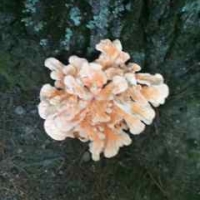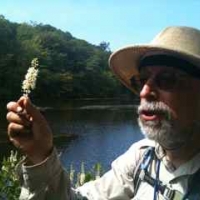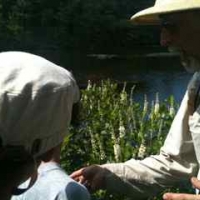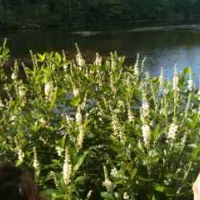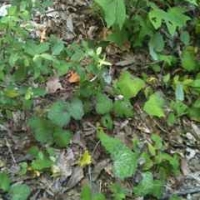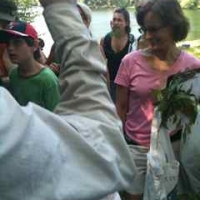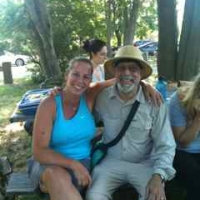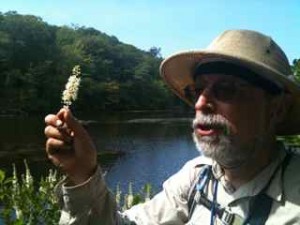 Wildman Steve Brill has been leading foraging tours since his first public excursion in Central Park on April 24th, 1982. The fact that he was arrested in Central Park in the mid ‘80s for eating a dandelion did more to boost his career than all of his knowledge, good story-telling and self-promoting combined. After receiving feedback from followers that his looks did not seem “wild” enough for a man who combs the forest for food, Wildman grew a beard and purchased a pith helmet to fit the part. Foraging for wild edibles is Wildman’s passion and, when you follow your passion, good things happen. In addition to providing a 30-year long career, foraging is what led the Wildman to his wife. The couple met when Steve led a foraging tour for singles, and the two have been foraging together ever since. These days, the outings include their 7-year old daughter, Violet, who has a knack for spotting wild edibles, and has even led a tour with her father for her former first grade class. One of Wildman’s best moments came when the great grandson of the brother of jazz musician, Bix Beiderbecke, attended an outing. Wildman is a great lover of jazz and performs his own version of the music in a technique he calls “Brillophone.” “Its legitimate jazz,” Steve says. On several occasions, he has been invited to jam with bands playing in Central Park.
Wildman Steve Brill has been leading foraging tours since his first public excursion in Central Park on April 24th, 1982. The fact that he was arrested in Central Park in the mid ‘80s for eating a dandelion did more to boost his career than all of his knowledge, good story-telling and self-promoting combined. After receiving feedback from followers that his looks did not seem “wild” enough for a man who combs the forest for food, Wildman grew a beard and purchased a pith helmet to fit the part. Foraging for wild edibles is Wildman’s passion and, when you follow your passion, good things happen. In addition to providing a 30-year long career, foraging is what led the Wildman to his wife. The couple met when Steve led a foraging tour for singles, and the two have been foraging together ever since. These days, the outings include their 7-year old daughter, Violet, who has a knack for spotting wild edibles, and has even led a tour with her father for her former first grade class. One of Wildman’s best moments came when the great grandson of the brother of jazz musician, Bix Beiderbecke, attended an outing. Wildman is a great lover of jazz and performs his own version of the music in a technique he calls “Brillophone.” “Its legitimate jazz,” Steve says. On several occasions, he has been invited to jam with bands playing in Central Park.
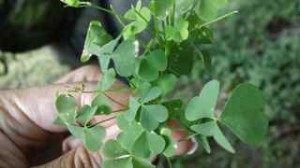 So what drew Wildman into the world of foraging? A love of cooking and ethnic foods played a large role. He remembers seeing a group of Greek women picking something wild in his hometown in Queens one day. He ended up heading home with a handful of grape leaves which he stuffed and enjoyed that evening. A self-taught forager, Steve feels his most impressive credential is that he hasn’t lost a tour member yet to a poisonous plant. And the tour members keep coming. Several people called to reserve spots in upcoming outings while Steve and I spoke. The day I went on my tour, 62 other people showed up. Wildman has a talent for storytelling and is a natural educator, especially of children. Three young boys hiked alongside Wildman for a large portion of our 3-hour journey, asking questions and soaking in the stories. When I called to interview Wildman, he informed me that he had just returned from a bicycle tour with inner-city kids. The bikes they used were made up of recycled parts. I told him my day’s outing had been cut short by the unfortunate disturbance of a wasp nest and several painful stings. “Did you find some jewel weed?” Steve asked me. “It cuts the pain in half.” I had, in fact, just learned this on the recent outing he led, but did not have the presence of mind to forage for it in my wounded state. Maybe next time.
So what drew Wildman into the world of foraging? A love of cooking and ethnic foods played a large role. He remembers seeing a group of Greek women picking something wild in his hometown in Queens one day. He ended up heading home with a handful of grape leaves which he stuffed and enjoyed that evening. A self-taught forager, Steve feels his most impressive credential is that he hasn’t lost a tour member yet to a poisonous plant. And the tour members keep coming. Several people called to reserve spots in upcoming outings while Steve and I spoke. The day I went on my tour, 62 other people showed up. Wildman has a talent for storytelling and is a natural educator, especially of children. Three young boys hiked alongside Wildman for a large portion of our 3-hour journey, asking questions and soaking in the stories. When I called to interview Wildman, he informed me that he had just returned from a bicycle tour with inner-city kids. The bikes they used were made up of recycled parts. I told him my day’s outing had been cut short by the unfortunate disturbance of a wasp nest and several painful stings. “Did you find some jewel weed?” Steve asked me. “It cuts the pain in half.” I had, in fact, just learned this on the recent outing he led, but did not have the presence of mind to forage for it in my wounded state. Maybe next time.
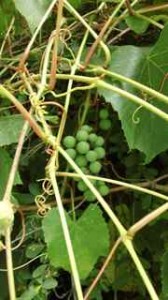 Now it was time to discuss the reason for my call – to learn more about what Wildman calls his “wild wines,” wines made from wild edibles. The very first wild wine Steve made was a dandelion wine in the 1980s. He had seen books that talked about making wines from foraged edibles, including those by Euell Gibbons, author of books on natural foods and proponent of natural diets during the 1960s, and he knew that dandelion wine was being made in Italy. For this inaugural wine, Steve foraged dandelions from Cunningham Park in Queens during the peak of their growing season, mid-April. A very labor intensive wine, only the yellow parts of the flowers were used because the green sepals are too bitter. For citrus flavor, he added some lime, poured boiling water over everything and let it cool to lukewarm. He then blended in a wine yeast purchased at a winemaking supply store in Little Italy and fermented the mixture in an open plastic food tub. Apparently, the wine came out great. Steve is not much of a wine drinker himself, but he enjoyed experimenting with several varieties of wine, some of which he used for cooking. Ramp wine was one reserved solely for cooking as the wine had a garlicky flavor that worked well in recipes, but was not pleasant to drink. Other more potable wines created by Wildman included those made from wisteria, black locust, red bud, pink mulberry, wine berry, autumn olive, wild currant, day lily, pineapple weed, apple blossom and, Steve’s favorite, oak leaf. He is not currently making wild wines because the many gallons he created have a long shelf life. For those of you inspired to try this at home, several recipes for wines made from wild edibles can be found in Wildman Steve Brill’s, The Wild Vegan Cookbook. For a list of upcoming outings, go to wwww.wildmanstevebrill.com.
Now it was time to discuss the reason for my call – to learn more about what Wildman calls his “wild wines,” wines made from wild edibles. The very first wild wine Steve made was a dandelion wine in the 1980s. He had seen books that talked about making wines from foraged edibles, including those by Euell Gibbons, author of books on natural foods and proponent of natural diets during the 1960s, and he knew that dandelion wine was being made in Italy. For this inaugural wine, Steve foraged dandelions from Cunningham Park in Queens during the peak of their growing season, mid-April. A very labor intensive wine, only the yellow parts of the flowers were used because the green sepals are too bitter. For citrus flavor, he added some lime, poured boiling water over everything and let it cool to lukewarm. He then blended in a wine yeast purchased at a winemaking supply store in Little Italy and fermented the mixture in an open plastic food tub. Apparently, the wine came out great. Steve is not much of a wine drinker himself, but he enjoyed experimenting with several varieties of wine, some of which he used for cooking. Ramp wine was one reserved solely for cooking as the wine had a garlicky flavor that worked well in recipes, but was not pleasant to drink. Other more potable wines created by Wildman included those made from wisteria, black locust, red bud, pink mulberry, wine berry, autumn olive, wild currant, day lily, pineapple weed, apple blossom and, Steve’s favorite, oak leaf. He is not currently making wild wines because the many gallons he created have a long shelf life. For those of you inspired to try this at home, several recipes for wines made from wild edibles can be found in Wildman Steve Brill’s, The Wild Vegan Cookbook. For a list of upcoming outings, go to wwww.wildmanstevebrill.com.
